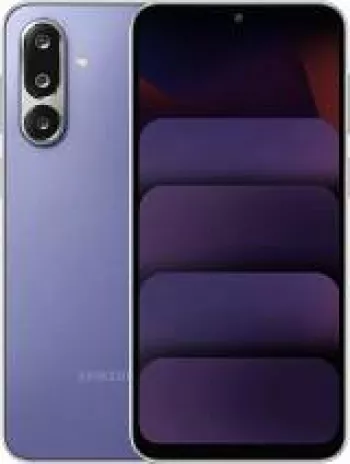
Introduction to Samsung Galaxy Round G910S
The Samsung Galaxy Round G910S was a unique smartphone that marked a moment in mobile technology history when Samsung tried to push the boundaries of conventional smartphone design. Released in October 2013, this device featured a curved display which set it apart from the flat-screen designs that dominated the market at the time.
Design and Build
The Galaxy Round sported a distinct design featuring a Super Flexible AMOLED display. Measuring 151.1 x 79.6 x 7.9 mm, and weighing 154 grams, it had a glass front, plastic back, and plastic frame construction. The design was both ergonomic and futuristic, offering a unique grip and viewing experience due to the curved nature of the display. Its curvature was subtle but noticeable enough to provide a differentiated feel.
Display
The standout feature of the Galaxy Round was its 5.7-inch Super Flexible AMOLED display. With a resolution of 1080 x 1920 pixels and a 16:9 aspect ratio, it delivered vibrant colors and deep contrasts, typical of AMOLED screens. The pixel density of approximately 386 ppi ensured sharp images and text rendering.
Performance and Hardware
Under the hood, the Galaxy Round was powered by a Qualcomm Snapdragon 800 chipset with a 28 nm manufacturing process. It featured a quad-core 2.3 GHz Krait 400 CPU and Adreno 330 GPU, providing robust performance capable of handling demanding applications and multitasking with ease. The device came with 3GB of RAM and 32GB of internal storage, expandable via a microSDXC card slot, which was more than adequate for the needs at the time.
Camera Capabilities
The Galaxy Round was equipped with a 13 MP main camera with autofocus, LED flash, and supported features like panorama and HDR. It was capable of shooting 4K video at 30fps and 1080p video at 60fps, making it a competent device for photography and video recording. The front camera had a 2 MP sensor, supporting 1080p video at 30fps, ideal for selfies and video calls.
Battery Life
Fueled by a removable Li-Ion 2800 mAh battery, the Galaxy Round offered respectable battery life. It provided up to 370 hours of standby time on 2G networks and up to 330 hours on 3G. The talk time could extend up to 16 hours, and music play lasted up to 74 hours, which was quite satisfactory for most users' daily needs.
Network and Connectivity
The Galaxy Round supported GSM, HSPA, and LTE networks, ensuring good compatibility for various network standards globally. It featured Wi-Fi 802.11 a/b/g/n/ac, Bluetooth 4.0, GPS with GLONASS, NFC, and an infrared port, providing a comprehensive suite of connectivity options. However, it lacked an FM Radio which was a minor downside for radio enthusiasts.
Operating System and Software
Running on Android 4.3 Jelly Bean, the device included Samsung's TouchWiz UI, offering a customized user experience with enhancements and additional features. While Android 4.3 did get outdated quickly after newer versions of Android were released, it provided a smooth user experience at the time.
Additional Features
The device was equipped with various sensors, including an accelerometer, gyro, proximity sensor, compass, barometer, temperature, humidity, and a gesture sensor. These added a range of functionalities, from basic orientation and navigation to advanced gesture-based controls.
Market Reception and Legacy
The Galaxy Round was a niche product aimed at showcasing Samsung's innovative prowess rather than mainstream acceptance. Priced approximately at 680 EUR, it represented a premium segment that not all consumers embraced due to its unconventional design. Nevertheless, it paved the way for subsequent innovations in flexible display technologies and influenced later designs, including foldable smartphones.
Conclusion
The Samsung Galaxy Round G910S, despite being discontinued, holds a memorable place in the evolution of smartphones. Its unique curved display and technological experimentation symbolize the ever-evolving nature of mobile devices and Samsung's commitment to innovation.
Key Features of Samsung Galaxy Round G910S
- Supports multiple network technologies: GSM / HSPA / LTE.
- Compact and lightweight design with dimensions of 151.1 x 79.6 x 7.9 mm and a weight of 154 g.
- Super Flexible AMOLED display, providing vibrant colors and clarity, with a size of 5.7 inches and 1080 x 1920 resolution.
- Powered by Qualcomm Snapdragon 800 chipset and a Quad-core 2.3 GHz Krait 400 CPU for efficient performance.
- Ample internal storage of 32GB with 3GB RAM and expandable via microSDXC.
- High-quality main camera with 13 MP resolution, supporting 4K video recording at 30fps.
- Comprehensive connectivity options including Wi-Fi 802.11 a/b/g/n/ac, dual-band, Bluetooth 4.0, NFC, and infrared port.
- Rich set of sensors including accelerometer, gyro, proximity, compass, barometer, temperature, humidity, and gesture.
- Removable Li-Ion 2800 mAh battery supporting up to 16 hours of talk time.
- Available in an elegant Luxury Brown color.
Samsung Galaxy Round G910S Drawbacks
- Discontinued status, limiting availability and support.
- Uses older Android 4.3 (Jelly Bean) operating system.
- MicroSIM card support, not compatible with nanoSIM used in modern devices.
- Plastic back and frame may feel less premium compared to metal or glass builds.
- Limited 2 MP front camera resolution for selfies.
- No radio support included.
- Relatively high initial price point (around 680 EUR).
- Limited 4G band support (only bands 5 and 9).
- Older microUSB 2.0 connection instead of newer USB-C.



View Also
More Phones
All Rights Reserved +14266 Phones © Mobilawy 2025

























